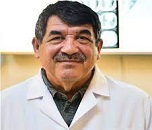Scientific Program
Keynote Session:
Title: Sphingosine-1-Phosphate exacerbates lung cancer-associated inflammation acting on Peripheral Blood Mononuclear Cells
Biography:
Dr. Michela Terlizzi, PhD, is actually a Research Scientist at the Department of Pharmacy of the University of Salerno (Italy). Dr. Terlizzi’s research activity over the years has involved the following lines of research providing an important contribution to the respiratory system physiology field: Study of molecular and cellular pathways involved in the alteration of physiological respiratory function following exposure to carcinogens, cigarette smoke and environmental pollutants both in in vivo models and in human samples; Identification of new inflammatory pathways involved in diseases of the respiratory system.
Abstract:
Sphingosine-1-phosphate (S1P) is a bioactive lipid mediator involve in inflammatory signaling/s associated with the development of respiratory disorders, including inflammatory disease and cancer, although many doubts about the precise mechanism are still to be clarified. In this study we aim to investigate the role of S1P, highly released from epithelial lung cancer cells, in circulating cellsmediated inflammatory processes. We used peripheral blood mononuclear cells (PBMCs) isolated from healthy volunteers and lung cancer patients to discriminate between the physiological and pathological role of S1P. We found that S1P exacerbates the pro-inflammatory milieu by inducing the release of TNF-α and IL-6 from lung cancer-, but not healthy-derived PBMCs in a S1P receptor 3 (S1PR3)-dependent manner. The pharmacological blockade of ceramidase and sphingosine kinases (SPHKs), key enzymes of S1P metabolism, in lung cancer-derived PBMCs completely reduced the release of both TNF-α and IL-6 after exogenous S1P stimulation. Furthermore, S1P-induced IL-6 release from PBMCs of lung cancer patients was mTOR- and K-Ras-, but not NF-κB-dependent. Interesting male adenocarcinoma and female squamous patients were more susceptible to S1P that induced IL-6-dependent inflammation. These data exalt S1P as one of the main orchestrators of lung cancer-associated inflammatory pathways, shedding light on a new pro-inflammatory mechanism mediated by immune circulating cells which sees S1P/IL-6 axis as a keystone in a complex landscape such as lung cancer.
Title: Post-COVID-19 patients who develop lung fibrosis have lower plasma levels of IFN-β but higher levels of IL-1α and TGF-β
Biography:
Dr. Chiara Colarusso is currently a Post-Doctoral Researcher in Pharmacology at the Department of Pharmacy, University of Salerno. Her actual scientific interest is on the molecular/cellular mechanisms involved in chronic lung inflammation at the basis of lung diseases, such as COPD and lung cancer. In particular, she is being focusing on the inflammasome-dependent pathways puzzling from the process of lung cancer establishment up to progression that occurs after therapeutic treatment. In this regard, another goal she is trying to reach is to understand cellular and molecular mechanism/s at the basis of ICI’s resistance in lung cancer patients.
Abstract:
Background. SARS-CoV-2 has caused a world-wide pandemic inducing a disease known as coronavirus disease 19 COVID-19, which may be associated to pulmonary fibrosis. A significant number of COVID-19 patients, although negative to the oral-pharyngeal swab, experience prolonged symptoms, herein called post COVID-19 (PC).
Aims and objectives. Based on the fact that the mechanism/s underlying SARS-CoV-2-derived pulmonary fibrosis are still not well defined, the aim of this study was to identify blood biomarkers to predict lung fibrosis-like changes in PC patients
Methods. We used blood samples collected from healthy subjects, anti-SARS-CoV-2 vaccinated (VAX) subjects, and PC patients who were stratified according to the severity of the disease and chest computed tomography (CT) scan data.
Results. We found that C reactive protein (CRP), complement complex C5b-9 and LDH, but not IL-6, were still higher in PC patients, independent of the severity of the disease and lung fibrotic areas. Interestingly, fibrotic PC were characterized by higher plasma levels of IL-1α, CXCL-10, TGF-β, but not of IFN-β, compared to healthy and VAX groups. In particular, 19 out of 23 (82.6%) severe PC and 8 out of 29 (27.6%) moderate PC patients presented signs of lung fibrosis, associated to lower levels of IFN-β, but higher IL-1α and TGF-β.
Conclusions. Our data suggest that higher IL-1α and TGF-β, and lower plasma levels of IFN-β could predict an increased relative risk (RR = 2.8) of lung fibrosis-like changes in PC patients.
Title: STRATEGY FOR OBTAINING ANTI-CANCER LIPOSOMES
Biography:
Alizamin Sadigov is a professor doctor with more than 30 tears of work experience in nursing, education, and research have graduated from Atlantic international university(AIU) in a doctorate and have received Ph.D. and MHSs degrees.Have graduated from Saint Petersburg medical university and have received a Medical Doctor degree. He also have two honored degrees: FCCP(Fellow at American College of chest physicians)and ATSF(Fellow at American Thoracic Society). He is the head of the pulmonary medicine department at the hospital clinic of a medical university.
Abstract:
In this topic we will discuss the use of new antibiotics and new suggestions from these in term on patient’s outcomes in hospital-acquired pneumonia(HAP).
HAP is simply a pneumonia that occurs 48 hours or greater after hospital admission and the symptoms of pneumonia are not present at the time of admission or within those first 48 hours of hospital admission. The next most common category is ventilator-associated pneumonia or VAP and this is a pneumonia arises 48 hours after implementation of mechanical ventilation. There is also a category of ventilated HAP or VHAP,which is a pneumonia that occurs 48 hours after admission.Again,the patient does not have symptoms of pneumonia within those first 48 hours and is not associated with mechanical ventilation.However,this type of pneumonia is fulminant and after patients develop symptoms ,they often require emergent intubation and mechanical ventilation.
Hospital-acquired bacterial pneumonia (HABP) is one of most common nosocomial infections in critically ill patients and is a major cause of mortality. Up to about 25%of all ICU infections and more than half of antibiotics prescribed in critical care units, are associated with pneumonia. Mortality rates are actually quite high as well, ranging from about 20% to 50%.Often the most fulminant serious type of pneumonia in the ICU is this ventilated HABP, followed by ventilator –associated bacterial pneumonia, and finally our lowest mortality rates in non-ventilated hospital HABP.
A major risk factor for pneumonia in the ICU is mechanical ventilation; about 10% in patients who are intubated may develop ventilator-associated bacterial pneumonia. Ventilator-associated bacterial pneumonia is associated with significant bad outcomes in not only increased mortality ,but also increased duration of ICU stay and overall hospital stay .Late onset pneumonia, particularly in the ICU, is associated with an increased risk for multidrug –resistant organisms. The top pathogens implicated in hospital-acquired pneumonia are represented generally by Staphylococcus aureus ,especially MRSA,but also by gram-negatives:Pseudomonas ,Acinotebacter,Eschericia coli,and Klebsiella ,particularly ESBL-producing and extensively drug-resistent Enterobacteriaceae.The incidence of hospital-acquired pneumonia caused by multi-drug-resistant pathogens id increasing worldwide. So, we are in front of problem-related to ESBL Enterobacterales and very important problems sustained by carbapenem-resistant Pseudomonas,Acinotebacte,Enerobacterales as causative agents of HABP and VABP.
Cefiderocol is a novel siderophore cephalosporin, which means that it crosses the bacterial membrane using active ion transport channels, almost like a Trojan horse. It is very stable against all Ambler classes of beta-lactamases. including Metallo-beta-lactamases. And most importantly, it has very broad Gram-negative activity to Acinetobacter, Pseudomonas, CRE, even to Streptrophomonas. The CREDIBLE-CR study has been shown non-inferiority of cefiderocol compared to BAT(best available therapy) for nosocomial pneumonia. There was higher mortality, with cefiderocol primarily found in a subset of patients infected by Acinotebacter species, particularly during the early and the late period of study.
Another new antibiotic is imipenem –relebactam which has been compared to piperacillin-tazobactam and has shown a similar effect against Pseudomonas aeruginosa.
The REPROVE study demonstrated the effect of ceftazidime-tazobactam to endpoints of patients with VABP compared to meropenem and the ceftadizime at the end was non-inferior to meropenem across all the ednpoints.
Another trial is the ASPECT nosocomial one, nosocomial pneumonia, in which ceftolozane –tazobactam has been compared with meropenem and there were no differences in all-cause mortality at day 28 in patients with ventilated HAP.
Another question is related to the use of clinical scores and biomarkers in order to decrease the duration of the treatment, because for the majority of the infections and particularly for pneumonia,8, maximum 10 days is probably enough for managing these difficult-to-treat infections.
Title: The role of spike protein entry inhibitors in the treatment and prophylaxis of mild to moderate Covid-19 in nonhospitalized patients.
Biography:
Nightingale Syabbalo is a Pulmonologist, and Clinical Respiratory Physiologist by training, and obtained his postgraduate training at St. George’s Hospital Medical School, University of London, UK. He was trained by one of the international prominent Respirologist of our times. Nightingale has worked as an academician, Consultant Physician, and a Clinical Researcher in several counties, including Canada, Kuwait, Oman, South Africa, and Zambia. He has published extensively in high impact medical journals, and is an Editorial Board member of thirteen journals in Pulmonology and Respiratory Medicine; and a reviewer of four journals in Thoracic Medicine, Respiratory Research, and Internal Medicine. Prof. Syabbalo’s current area of research focuses on the role of interleukins in the pathophysiology and treatment of severe asthma. He has also interest in the mechanisms of interleukins-1β in the pathogenesis and treatment of pericardial syndromes.
Abstract:
Severe acute respiratory syndrome coronavirus 2 (SARS-CoV-2) is a life-threatening pneumonia caused by an enveloped, single-stranded RNA betacoronavirus belonging to the coronaviridae 2B lineage [1]. The SARS-CoV-2 genome is enclosed in the nucleocapsid protein, and is surrounded by three protective structural proteins, including membrane protein, envelop protein, and spike protein [5]. The structural proteins are potential targets for the development of antivirals, and vaccines for early treatment and prevention of the progression of Covid-19. Entry of SARS-CoV-2 into host cells is mediated by the spike glycoprotein [7,8], which is composed of two functional subunits, including the S1 and S2 subunits. The standard of care of severe Covid-19 include high-flow nasal oxygen, corticosteroids, remdesivir, and anti-interleukin-6, such as tocilizumab, or Janus kinase inhibitors, including baricitinib. However, mortality due to Covid-19 is prohibitively very high. Monoclonal antibodies which binds to epitopes on the receptor binding domain (RBD) of the spike protein of SARS-CoV-2, have the potential for early treatment of Covid-19, and in preventing progression of the disease. Bamlanivimab plus etesevimab [1-3], casirivimab plus imdevimab [4-6], and sotrovimab [7] are recombined human monoclonal antibodies that bind to different epitopes in the RBD of the spike protein. They have been shown to reduce the risk of hospitalization and death in about 70-85% of nonhospitalized patients who had mild to moderate Covid-19 symptoms [12,19-21]. Bamlanivimab-etesevimab, and casarivimab-imdevimab are still effective against Alpha (B.1.1.7), Beta (B.1.351), Gamma (P.1), and Delta (B.1.617.2) variants, but they have reduced susceptibility against the Omicron (B.1.1.529) variant of concern. Therefore, these spike protein entry inhibitors should not be recommended in countries where the Omicron variant of concern prevalence exceeds 80% [17]. Sotrovimab has been demonstrated to retain vitro and in vivo activity against all currently tested variants of concern and interest of the SARS-CoV-2 virus, including Delta (B.1.617), Delta Plus (AY.1 or AY.2), and Omicron (B.1.1.529) [13-15]. Sotrovimab is recommended for the treatment of nonhospitalized patients with mild to moderate Covid-19, and for post-exposure prophylaxis in countries severely affected by the Omicron variant [16]. Other recommended antivirals include remdesivir [22], nirmatrelvir plus ritonavir [23], and molnupiravir [24], which are active against the Omicron variant.
Conclusion & Significance: Treatment of nonhospitalized patients with Covid-19 is challenging because of the emergence of SARS-CoV-2 variants which become less susceptible to novel spike entry inhibitors.
Title: Black Carbon as an Additional Indicator of the adverse health effects at urban scale
Biography:
Ornella Salimbene is Environmental Engineer, PhD researcher in Urban and Regional Development at the Department of Environmental and Infrastructure Engineering (DIATI) of the Polytechnic of Turin (Italy). She collaborates with the Environmental and Sanitary Engineering group (Wearve) and with Geomatics Lab of Politecnico of Torino. Her research activities focus on the study of air pollution, its impact on human health and on new possible indicators for air quality management at urban level. O. Salimbene research approach is interdisciplinary and integrates clinical, environmental, and social data into real-time living laboratories on an urban scale. Currently O. Salimbene collaborates with several Italian hospitals, with the School of Architecture, Planning and Environmental Policies of the University College of Dublin (Ireland) and with the Department of Chemistry-Physics of Industrial and Aerospace Engineering of Toledo of the University of Castilla La Mancha (Spain).
Abstract:
Problem: Continuous personal monitoring is a benchmark for assessing exposure to air pollution. European air quality standards for particulate matter (PM) use the mass concentration of PM (PM with aerodynamic diameters ≤ 10 μm (PM10) or ≤2.5 μm (PM2.5)) as the metric. It would be desirable to understand if black carbon (BC) can be a better indicator than PM10 and PM2.5. To achieve this goal, it is necessary to implement social, environmental and clinical data by developing real-time laboratories on an urban scale. This research discusses an integrated approach on three pilot studies developed in the city of Turin (Italy). The activities involved the resident population and some volunteers with chronic obstructive pulmonary disease (COPD).
Methodology and Theoretical Orientation: The Living Lab developed in Turin was organized in three pilot studies (LLs). LL#1 involved 15 volunteer citizens residing in Turin who were observed and monitored for a week (November 2021). The BC concentrations detected with AE51 portable sensors were superimposed on the information collected by the urban monitoring network. LL#2 observed (October 2020-October 2021) the respiratory parameters of 50 male volunteers with mild COPD and residing in Turin in areas with different traffic densities. More precisely, 25 volunteers resided in high-traffic areas and 25 in low-traffic areas. LL#2 allowed us to investigate the associations between PM, BC and forced expiratory volume in the 1st second (FEV1). Finally, LL#3 developed a social survey on over 300 Turin citizens who participated in a semi-structured questionnaire on urban air quality and their behaviors adopted in favor of urban air quality. Each apparently different LLs is interconnected by a common denominator: the data collected by users, such as active human- sensors, provide information to be integrated in the management of air quality regulation policies at the local level. Results: A total of 8640 eBC measurements were obtained during LL#1 with an average daily personal exposure of 3.1 µg/m 3 (± SD 1.3). The change in movement patterns and the variability of microenvironments were determinants of exposure. LL#2 showed that high traffic density is significantly associated with lower forced expiratory volume in 1s (FEV1) and forced vital capacity (FVC). LL #2 results highlight that people with persistent respiratory symptoms and residing in busier areas appear to be more vulnerable to BC exposure and have greater sleep wheezing.
Conclusion and Meaning: Preliminary results highlight the potential utility of Living Labs for innovative approaches to designing an urban-scale air quality management plan that also includes BC as a new indicator for protecting human health.
Title: Comparing Characteristics of first and second wave among hospitalized COVID-19 patients residing in high altitude of Nepal
Biography:
Dr. Pal Anusmriti is one of the doctors registered with Nepal Medical Council. Nepal Medical Council has around 8300 registered dcotors. Not all these doctors have received their degree from Nepal, some have received their degree from Nepal but many have received their degree from some other country and are registered to practice in Nepal.
Abstract:
Introduction The purpose of this study was to compare the demographic profile, clinical characteristics and outcomes of patients during the first (W1) and Second wave (W2) of corona virus disease (COVID-19) hospitalized in high altitude rural region of Nepal. There has been limited information among high altitude patients requiring hospitalization for COVID-19 during first and second wave. Methods: This was a retrospective cross-sectional study done in high altitude rural area of Nepal (Chandannath, Jumla). All patients of age 15years and above who got admitted in our centre, Karnali Academy of Health Sciences (KAHS) were included in this study. All patients either polymerase chain reaction (PCR) positive or Rapid Detection Antigen Test (RDT antigen) positive were enrolled in the study after taking their informed consent. Data entry and analysis was done in Microsoft Excel 2010. The two waves of demographic profile, clinical characteristics and hospital outcome were correlated using the statistical analysis. Results During the W1 202 patients versus 558 patients in W2 were admitted in KAHS isolation ward over 7months period (June2020-Jan2021) and 9months period (May 2021-Feb2022) respectively. The mean age in W1 was 32.55 SD 10.2 with 69.3% male (n=140) and 30.7% being female. Whereas in W2 mean age was 46.7 SD 17.89 with male being 53% (n=296) and female 46.9%. The average hospital stay during first storm was 11days (Range 2-34days) with most patients having mild symptoms and 7.9% had moderate symptoms requiring oxygen (2-5l/min). In W2 average hospital stay was 8.14 days (Range 1-50) with most patients having moderate to severe symptoms requiring oxygen therapy with mortality of (24) 4.3%. The average patients having mild, moderate and severe symptoms requiring ICU admission in W2 were 3.12, 4.18 and 0.77 respectively. In first wave 30.7% health workers were infected and there was no mortality. Conclusion COVID-19 has affected millions worldwide resulting in Severe acute respiratory syndrome coronavirus2 (SARS-CoV-2) with a high mortality rate due to a lack of definitive treatment. In our study, we found that males were more affected then females in both waves with ICU admission and mortality rates being higher among W2 with 4.3% mortality. Key Words: Corona Virus Disease 2019, Polymerase chain reaction, Severe Acute Respiratory Syndrome.
Title: COVID-MENTANDEMIC: COVID INDUCED MENTAL PANDEMIC IN HEALTH CARE PROFESSIONALS
Biography:
Prof. DR Mayank Vats PUBLIC AND HEALTH INFLUENCER AND MOTIVATOR SR. Specialist, Pulmonologist, Intensivist, Interventional Pulmonologist, Sleep Physician, Rashid & Dubai Hospital, DHA United Arab Emirates. He Has Vast Experience In Successfully Managing All Patients Related With FULL SPECTRUM OF PULMONARY, CRITICAL CARE, SLEEP MEDICINE AND INTERVENTIONAL PULMONOLOGY, BRONCHOSCOPY Procedures Brochoscopic Biopsy, EBUS TBNA, RADIAL EBUS, Cryobiopsy, TBLB, Electrocautery, Valves Placement For Endoscopic Lung Volume Reduction, Stents For Stenosis, FULLY CONFIDENT, PROFESSIONALLY COMMITTED, DEDICATED, And DEVOTED Inpatient Management And UPDATED Knowledge With A Human Approach.
Abstract:
With the sudden outbreak of COVID 19 pandemic globally , whole world suffered from this lethal disease but the health care professionals (HCP ) including doctors, nurses, technicians, paramedical, administrative, pharmacy staff remain the main professionals directly involved in management and treatment of COVID 19 . Although in all the countries HCP did a heroic job with full dedication and selflessly saving lives of millions but during this long 2 yrs of period they also suffered with disease emotional stress, physical stress due to overwhelmed number of cases and working round the clock for patients with mental and physical tiredness. HCP are also humans and they are not immune to the psychological consequences due to COVID-19. Among all the HCPs, front-line workers were at greater risk of acquiring this deadly and devastating disease . Many reasons could be narrated for the adverse psychological outcomes in HCP including but not limited to excessive workload/ long work hours, fear of catching infection themselves or transmission the infection to the family , remaining in quarantine for few months away from the family because the mode of transmission was not clear and inadequate personal protective equipment, over-enthusiastic media news, feeling inadequately supported 1 Another important reason for such psychological impact is the very high infection rate with consequent high risk of complications related to COVID and Non COVID factors in HCP, this might lead to frustration, helplessness, adjustment issues, stigma, fear of discrimination and death or long term comorbidity in the medical staff2 . Despite the low mortality rate of 2%, the COVID-19 virus has a high transmission rate and the mortality is higher. The literature published during the outbreak of SARS almost more than a decade ago suggested that HCW are at higher risk of developing anxiety, depression, stress during these periods3 . A similar school of thought exists about the effect of COVID-19 pandemic, some studies were carried out in the past 3 months to assess the psychological impact of this disease on healthcare workers. In India, some of doctors committed suicide when they were diagnosed as COVID positive, Thousand of HCP died due to COVID19 and no official support of help had been offered to them from government. Many of doctors either were terminated from the hospital because their speciality like Dental, ENT, ophthalmology and other superspecialists were no longer needed due to high number of COVID case and many doctors resigned and worked on low salary, some doctors faced violence also form the patients relatives . These all factors contributed to significant level of mental stress among HCP and still doctors are under mental stress or post traumatic stress disorders. HCP face many problems in their personal , social and marital life as well with resultant high numbers of marital conflicts, separation and divorce among the doctors and with consequent effects on their kids and parents Conclusion : COVID–MENTANDEMIC, COVID induced socio-psychological , physical and financial stress are being faced globally and with consequent another ongoing but hidden pandemic of stress, depression , anxiety and many more psychological disorders called as COVID Mentandemic would increase and continue in near future and all governments should take necessary steps for avoidance of this COVID-MENTANDEMIC by controlling coronavirus spread, developing and delivering effective vaccine with at least 80 % coverage target and to keep themselves ready for supporting HCP psychologically for better mental health being over coming few years . Positive motivational factors like supportive and proud family and colleagues, positive role models, validation and appreciation by peers/patients, positive caretaking experience, a sense of validation of existence, knowledge, and acceptance the possible inevitability of infection need to be strengthened to boost the morale of HP. As per this study, the negatives associated with patient care include multiple needs of the patients, stigma, need for clear management plans. One solution proposed by the HP interviewed to overcome the negatives include setting up of multidisciplinary teams and screening questionnaires4. Future Perspectives : The mental health issues associated with the COVID-19 pandemic can be short-term or long-term. All Governments should provide psychological and social support to the HCP and especially to them who had COVID 19 or who suffered psychosocially and financially during the COVID era. Existing literature addresses the immediate mental health concerns only. It is important to see the long-term mental health sequels of COVID-19 infection. Nothing is known about the after-effects of novel coronavirus infection; hence, there is a need for extensive research in terms of its long term impact on HCP populations.
Keynote Session:
Title: Acute Exacerbations of Chronic Obstructive Pulmonary Disease: Improving patient outcomes via preventing options.
Biography:
Alizamin Sadigov is a professor doctor with more than 30 tears of work experience in nursing, education, and research have graduated from Atlantic international university(AIU) in a doctorate and have received Ph.D. and MHSs degrees.Have graduated from Saint Petersburg medical university and have received a Medical Doctor degree. He also have two honored degrees: FCCP(Fellow at American College of chest physicians)and ATSF(Fellow at American Thoracic Society). He is the head of the pulmonary medicine department at the hospital clinic of a medical university.
Abstract:
The goal of this report is to improve patient outcomes in acute exacerbations of chronic obstructive pulmonary disease(AECOPD) by using preventing options .We are going to discuss the importance of exacerbations in the natural history of COPD, the experience of exacerbations-how we can prevent these events. The Global Initiative for Lung Disease(GOLD) is quite vague in defining an exacerbation. However, this definition is not objective and based on complaints of patients and subjective. And recently has been published new approach to the definition of the COPD exacerbation by John Hurst and co-authors, which has the advantage of proposing a more objective type of definition with timeframe and specific symptoms listed ,characterizing the exacerbation, and all od them quantifiable in an objective way ,a number of markers and biomarkers again ,that can be measured and quantified, and the possibility of etiologic causes. So it is more a true definition of what an exacerbation is.
And another question is why is it so important to have a good knowledge of exacerbation? Because exacerbations are extremely crucial in the natural history of COPD, not only for the acute event per se, which might be very severe-it might be fatal actually in some cases-but because exacerbations do impact on every single outcome of COPD. Frequent exacerbators are those with the worst quality of life; risk for future exacerbation, the more frequent exacerbations, the more likely it is that future exacerbations will be severe and require hospitalization; the impact on acceleration of decline in lung function and life expectancy.
One severe exacerbation requiring hospitalization decreases life expectancy. Fifty percent of patients died less than 4 years after their first hospitalization for an exacerbation and so there is good understanding why one single event is too much and also good understanding is why we need to aim to reduce these event.
Unfortunately .we are still using the same drugs today that we were using when we first qualified more than 20 years ago. And what is better way for reducing exacerbation event ?The better way is at least use this exacerbation event as an opportunity to optimize the patient’s care for the future. Prevention in every way, pharmacological and non-pharmacological ,hopefully, and luckily vaccination, is nowadays much more considered and present in our minds than it was in the past. Smoking cessation is crucial important ,however, we don’t forgot about pulmonary rehabilitation in a second and we have to think in the era of Covid-19,something that we will also come back to later on, the issue of how to prevent respiratory viral infection transmission is a really live question. Good practice for patients with recurrent exacerbations is pulmonary rehabilitation as a specialized program of exercise ,that may last for 6 weeks, twice a week in group sessions. And there is also online rehabilitation programs that’s so important in view Covid-19 pandemic.
There is raising regarding GOLD and changes is that now one exacerbation in the follow-up is considered a flag for future risk. So one exacerbation is indicating the need for prevention of future exacerbations. The ECLIPSE study showing that one exacerbation already indicates more than twice the risk for future exacerbations .
The importance of non-pharmacological intervention, prevention, vaccination, smoking cessation, good use of devices ,rehabilitation is clear. The is also most important point in this term is effective treatment approaches for preventing these acute events. The doctors cannot ignore COVID and what we have learned from this pandemic, which has taught us how infection can be effectively prevented by simple measures ,and how communication on lifestyle is important to avoid these dramatic event for patients.









